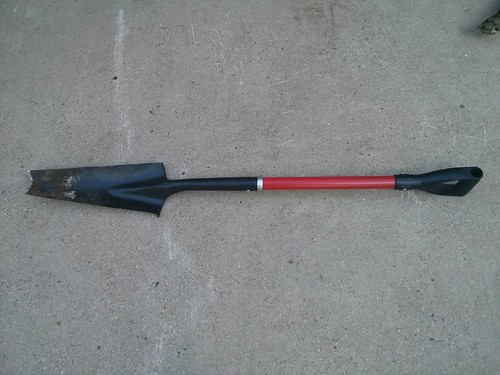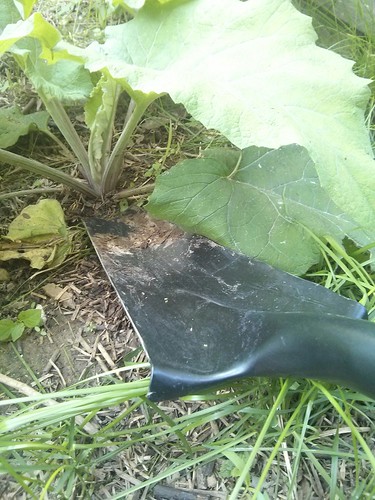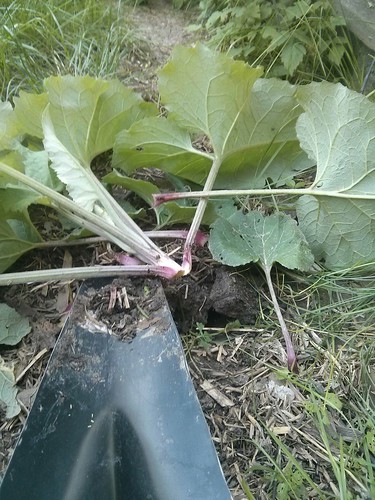In the perennial battle against invasive biennial weeds, I’ve been doing a little bit of experimenting.
After last year’s failed attempts at some well-timed cutting, first with the brush-hog (until it hit a rock and broke) and then with a scythe, it was time to find a different solution.
I’d heard good things about the parsnip predator, a specially-designed shovel that’s used to sever the taproot of wild parsnip and other biennial weeds. All the reviews sounded good but $50-60 is an awful lot to pay for a cheap shovel.
I cleared a bit of thistle and burdock with my 6″ grubbing hoe and my Fiskars post-hole shovel. Both worked OK, but they were far from ideal. The grubbing hoe is too wide and too hard to aim. The Fiskars is too heavy (which makes it a great post-hole shovel) and the rounded nose wasn’t helping much, even when kept very sharp.
So I moseyed on down to the hardware store and bought the cheapest light-weight post-hole shovel I could find.
I chopped an inch off each side at the bottom of the shovel (tapering to full-width at the top) and cut a V-notch in the nose. I drilled out the handle-rivet, rotated the handle 90° and re-attached it with a machine-screw and bolt. After a bit of grinding and hand-filing to get it nice and sharp it was off to the pasture to see how it worked.
In short, like a dream.
Follow the stem of the plant down to ground level, back the blade off just a bit, then push down at an angle to slice through the taproot.
With a quick flick of the wrist you can pop the plant right out of the ground, leaving very little disturbed soil. It’s amazing that just a few small changes can make such a huge difference in the speed at which you can kill weeds. This tool can make mincemeat out of even a very large thistle (or burdock, or parsnip) in one second. The small sharp blade is easy to push through the taproot with one hand, and the V-notch makes it possible to get centered on the stem without seeing the base of the plant.
I wish I’d have made one of these a long time ago.



